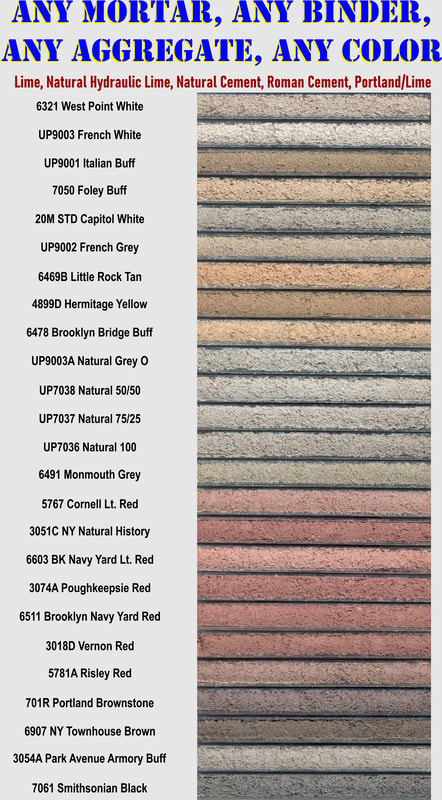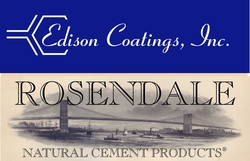Historically, mortars were either unpigmented, leaving color to be influenced by the binder and aggregate colors, or were pigmented to achieve a more decorative appearance. Common historic colors were achieved using red, yellow or black iron oxides. In some cases, brick dust, slag or charcoal were also used. The following are typical natural mortar colors developed and matched to actual historic mortars from a number of high-profile historic restoration projects in the United States. Due to the constraints of camera, monitor and printer color accuracy, actual colors may vary from those shown significantly. It is highly recommended that you obtain and view a physical mortar sample before ordering. Cured sample strips of these colors can be ordered here.
While these are typical historic mortar colors, your selection is not limited to those shown and custom color-matching service is available. Custom-matching generally includes both matrix color and aggregate color/size/grading.
20M Capitol White is lime putty LP-20M Standard White. UP9003 and UP 9001 are Natural Hydraulic Lime-based. All others are shown in a Rosendale Natural Cement base, but the same colors may also be ordered in E-NHL 3.5, Marfil Natural (Roman) Cement or Translantic C10 Cement bases.
While these are typical historic mortar colors, your selection is not limited to those shown and custom color-matching service is available. Custom-matching generally includes both matrix color and aggregate color/size/grading.
20M Capitol White is lime putty LP-20M Standard White. UP9003 and UP 9001 are Natural Hydraulic Lime-based. All others are shown in a Rosendale Natural Cement base, but the same colors may also be ordered in E-NHL 3.5, Marfil Natural (Roman) Cement or Translantic C10 Cement bases.


